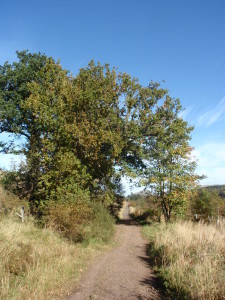Earlier this week Reforesting Scotland launched their new Guidance on Hutting http://www.thousandhuts.org/wp-content/uploads/2016/02/160215-Huts-Guidance-FINAL-screen-res.pdf. It was welcomed by Cabinet Secretary for Rural Affairs, Richard Lochhead, “Huts and hutting are a great way for people to enjoy Scotland’s outstanding natural environment, with all the benefits to health and wellbeing this can bring. I very much welcome the publication of this guidance, which I hope will provide an important opportunity for many more people in Scotland to enjoy the recreational benefits associated with huts and hutting.” Substitute the words “camping” for “hutting and you will start to understand just how muddled the thinking of the Government is.
For camping of course has all the benefits of hutting, indeed more so, because campers are even closer to nature and any impacts are temporary. Yet, Mr Lochhead allowed his junior minister, Aileen Mcleod, to approve bye laws banning camping from the most popular places in Loch Lomond and Trossachs National Park just last month. So, just what is going on?
Government Ministers seem to have little appreciation of our history and that hutting and camping were once intimately connected. While the famous Carbeth huts have survived from the 1920s and 1930s, in the early days there were also formal campsites at Carbeth which were used as bases by groups like the Clarion Cycling Club for exploring the countryside. And, as anyone who  has walked the West Highland Way will know, the nearby Craigallion fire (photo) was where various outdoor folk dossed for the night, including the famous planner Robert Grieve whose name is ironically commemorated in one of the meeting rooms at the LLTNP HQ.
has walked the West Highland Way will know, the nearby Craigallion fire (photo) was where various outdoor folk dossed for the night, including the famous planner Robert Grieve whose name is ironically commemorated in one of the meeting rooms at the LLTNP HQ.
All that has changed since the early days of the outdoor recreation movement is that campers have gone a little further afield, beyond walking distance from Glasgow. With cars of course its possible to explore the Highlands but most people do not go far, which is why on a hot summer weekend up to 830 tents have been counted on the loch shores of the LLTNP. This fits with the picture given in the Reforesting Scotland Guidance which is that highest demand for huts is in countryside around towns: “a significant number of hut owners in Scotland live within 10 miles of their hut, and over half of those we surveyed live within 25 miles of their hut. We support the continued development of huts in such accessible rural locations”.
The LLTNP was set up in part to enable people from the Glasgow conurbation to enjoy the countryside. The Government needs to state clearly if its vision for hutting extends to our National Parks because its far from clear that the LLTNP Authority intends to promote hutting: ” We have not identified any sites for recreational huts and would consider any such application on the merits of the particular proposal. We would expect any proposal to demonstrate need and be small-scale with a few units. Appendix 1 provides a list of conditions that we may use to ensure that the hut continues to provide a basic recreational facility and is not used as a normal holiday home or permanent house”. (Draft Visitor Experience Section of Development Plan 2015).
The Park needs to answer for its failure to identify land for hutting which is, I believe, not unconnected to its failure to identify land for campsites. The biggest landowner in the Park is Forestry Commission Scotland which, besides native woodland, owns large conifer plantations the fringes of which provide plenty of opportunities for hutting. The Park incidentally provided a perfect illustration of this in its campsite design submitted to Ministers http://www.thisisyourpark.org.uk/?wpdmdl=1829 Its hard to imagine a worse place to camp than wooden platforms on a hillside but these could just be suitable for huts in areas where there is little flat ground.
Unfortunately, the Government does not appear to have grasped that what really drives the LLTNP Authority is NIMBYism. The people who run the Park don’t want either campers or hutters in their backyards which is why there is no plan for campsites in places like Balmaha, where there is plenty of suitable land and high demand because of its location on the West Highland Way.
The Government needs to sort out its doublethink, hutting good, camping bad. A coherent approach would encourage hutting in the LLTNP away from the lochshores (where it could impact on the enjoyment of others through permanent occupation of the land), while recognising that these same loch shores provide the best camping experiences.